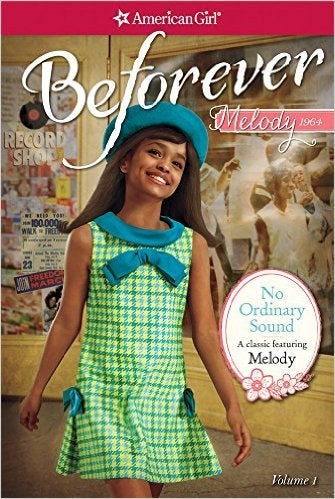This holiday season, a scourge of catalogs will flood your mailbox, and if you have a daughter or have ever been anywhere near a daughter, the American Girl Doll catalog will be among them.
American Girl, started by former schoolteacher Pleasant Rowland in 1985, has been around long enough that women who pored over the pages of pricey, well-dressed dolls can now smile/cringe as their own daughters do the same. The dolls, who each also have their own book series, resemble 8-10 year-old girls, appealing to an older audience than your average doll. While today’s girls can also collect “Truly Me” dolls designed to be their inanimate twins, the cornerstone of the brand has always been the historical dolls, who represent nine different historical periods and a variety of ethnicities. Can buying one of their $115 dolls actually teach girls about anything other than materialism?
As researchers Nina Diamond et al. wrote in a (very amusing) sociocultural study, “Girls create intricate backstories for their dolls, intertwining content from the books with their own family histories.” This intersection of stories has always been the intention of the brand, which was created as a way to bring history alive for young girls, providing them with opportunities for imaginative play that are more wholesome than, say, a Barbie. Pleasant Rowland has described the soul of the brand as being “chocolate cake with vitamins.” The researchers go so far as to say, “Female kinship groups also find powerful cultural material in the American Girl brand with which to construct themselves as a family.”
Yes, the dolls and their never-ending accessories are expensive and encourage frenzied collecting, but the company has maintained a commitment to telling important stories. The historical characters each have an accompanying set of six books that place each “real girl” in her particular place and period in American history, with stories and illustrations portraying each girl/doll in clothes, accessories, and settings that evoke the period (and are often reflected in the catalog’s offerings).

The newest addition to the club is African-American Melody Ellison, a music-loving Civil Rights activist in 1960s Detroit. (Significantly, as Aisha Harris pointed out in Slate, “unlike American Girl’s only other available black doll [Addy]—she wasn’t born a slave.”) When creating their historical dolls, American Girl has always valued authenticity, forming a historical advisory board and research teams for each character. Mark Speltz, a senior historian at American Girl, explained in an interview that it takes two to three years for each character to grow from concept to books and dolls, and that the historians scour museums, historical societies, and the relevant neighborhoods to make sure their portrayals are accurate. To create Melody, “an advisory panel included members who were experts on the time period, had grown up in Detroit or participated in the June 1963 Walk to Freedom alongside Martin Luther King Jr.”
It’s rather prescient of American Girl to have introduced this girl this year. As Speltz put it:
Many, many roots of problems in Milwaukee and Chicago and many urban, northern and western cities are related to race. It’s decades upon decades of people doing the same things: protesting at schools, sitting in on lunch counters, demonstrating outside of stores so they could be hired – many of the exact same southern things were taking place in northern communities.
Can purchasing a doll be a revolutionary act? Marcus Garvey asked mothers to “give [their] children dolls that look like them,” and we know that relating to historical characters makes history come alive; American Girl combines these two concepts. It’s empowering for today’s girls to read stories of ordinary girls, like themselves, living bravely through extraordinary times. As Melody’s character description reads: “It’ll take courage, but adding my voice to others can really make a difference.”







